Diamond Fluorescence
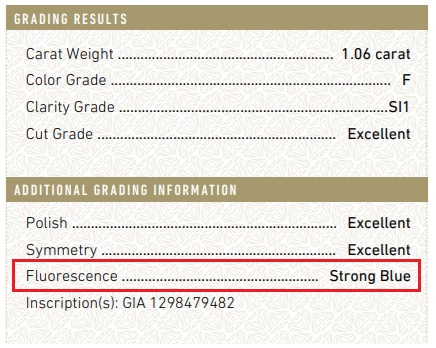
Is diamond fluorescence a good or bad thing?
You might have come across retailers or jewelers who would tell you that fluorescence in diamonds is bad and is a negative property to have. They might even warn you against buying such diamonds altogether.
Well, let me go on the record saying that such advice is true to some extent since diamond fluorescence can indeed be a problem at times. However, there is much confusion among consumers because fluorescence is a widely misunderstood topic.
Personally, I find diamonds with fluorescence very intriguing.
The truth is that fluorescence’s effect on a diamond’s sparkle and brilliance is negligible if you had done your choosing correctly. The beauty of a diamond is predominantly determined by cut. Whether fluorescence is good or bad depends on a few factors which we are going to discuss in this section of our website.
Photographs Courtesy of Brian Gavin Signature Blue Diamonds
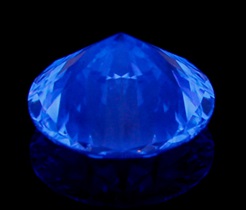
Medium Blue Fluorescence
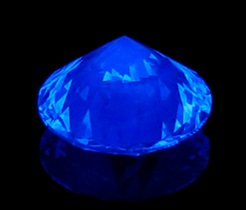
Very Strong Blue Fluorescence
Why Does Fluorescence Occur Naturally in Diamonds?
Fluorescence refers to the discharge of light by a diamond after it is subjected to electromagnetic radiation (e.g. ultraviolet light). Some common sources of UV radiation include black lighting from night clubs, fluorescent bulbs and natural sunlight.
When trace amounts of elements such as boron, nitrogen or aluminum are present in a diamond’s atomic structure, energy from UV sources can be absorbed by electrons in these trace elements. Once these electrons absorb energy, they become excited and jump to higher states of energy.
Following the laws of physics, “excited” electrons will always seek to return to a stable state and they can only do this by getting rid of excess energy by emitting them in the form of photons. This release of photons is what we observe with our naked eye as fluorescence.
The most common color of fluorescence is blue but other colors are possible too, i.e. yellow, white, greenish yellow, green and pink. Ultimately, this fluorescent color is determined by the chemical composition and make-up of the diamond’s lattice structure during its formation process.
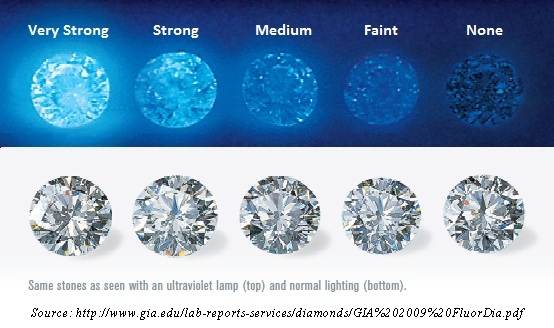
Blue Fluorescent Diamonds – Pros and Cons
So is fluorescence in a diamond good or bad? Should you buy a diamond with fluorescence? In my opinion, fluorescence is largely a matter of personal preference. Let’s take a look at the pros and cons of fluorescence…
Pros: The biggest advantage of buying a diamond with fluorescence is that they cost a lot less! There’s an irrational fear of fluorescence in the market and this drives down prices. For example, most colorless diamonds (D-F) with fluorescence sell at a 15-30% discount even when fluorescence does not affect their appearances! If you are interested in finding out more, I’ve written an indepth article to compare diamond prices here.
I personally love fluorescence as well because it looks really cool at the disco and there’s an added benefit of having it in lower color diamonds. For near colorless diamonds in the I-K color range, fluorescence is actually a desirable attribute because the blue hue helps cancel out yellowish tints in environments like sunlight. This makes a near colorless diamond look whiter!
Cons: Fluorescence is unpopular with consumers because of a negative stigma that it causes diamonds to look hazy. While fluorescence does cause diamonds to look milky in some cases, the majority of blue fluorescence diamonds are perfectly fine. In fact, their appearance and transparency will look identical to non-fluorescent diamonds.
Because many people view it as a “defect”, diamonds with fluorescence are harder to sell as well. If you are someone who is looking to sell your diamond in the future (fyi, it’s a really bad idea), it would be better for you to buy a diamond without fluorescence.
Why Are There So Many Conflicting Views?
First of all, the culprit behind the diverse views stems from a study that GIA performed in 1997. In this study, it was found that 35 percent of all gem quality diamonds displayed fluorescent properties under ultraviolet lighting conditions.
The study also found that 10 percent of diamonds showed visible differences in their body color when seen under UV light environments. The key takeaway here was that fluorescence actually enhances the diamond’s appearance! For example, in day lighting conditions, fluorescence can make diamonds with warmer colors (lower color ratings) appear “whiter”.
Next, GIA claimed that less than 3 percent of diamonds with medium – strong blue fluorescence possessed foggy appearances. Such diamonds were dubbed as “overblues” in the industry and were considered undesirable. On this note, GIA has repeatedly stated that it is super rare to find a hazy or oily looking diamond caused by the presence of fluorescence.
Personally, I disagree with GIA’s claims that a diamond’s fluorescence rarely impacts its transparency. Fluorescence DOES cause haziness in diamonds and it is more prevalent than most people think it is!
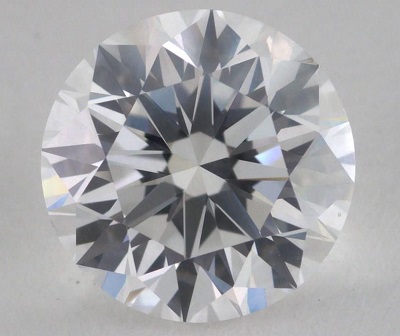
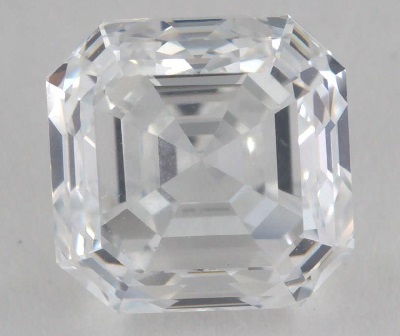
Out of 18 random diamond listings with color grades or D-F and clarity ratings of IF-VVS2, I found 2 such examples where the diamond takes up a slightly foggy and milky appearance. You can view the links here: #78154 & #219602.
On the next page, I will debunk this erroneous study and point out the contradictory results that were presented.
Related Articles
Leave A Comment

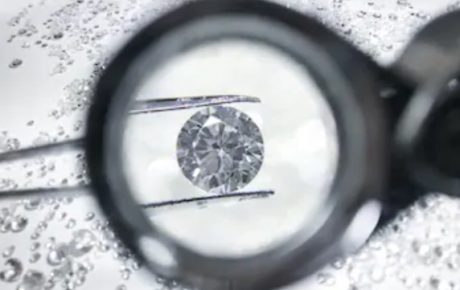
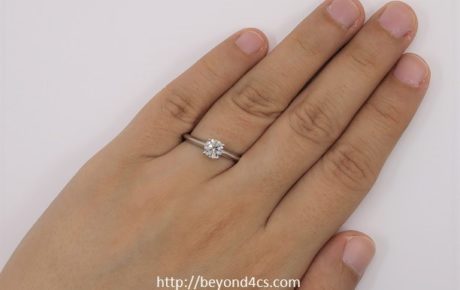
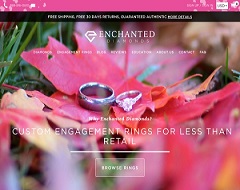
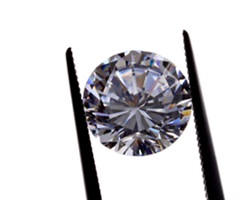









14 Comments
* Update: I realized that the 2 links to the hazy diamond examples have been outdated. Here is another listing that showcases milky looking colorless diamonds caused by fluorescence: https://beyond4cs.com/go/ja-485686/
The more I read, the more I get confused. How does fluorescence affect a diamond besides lowering their value? Is a diamond rated as faint on the fluorescence grading chart going to have bad side effects?
Also, I’m curious to know if a medium yellow fluorescence will display similar problems to another one with medium blue.
In general, diamonds with fluorescence are sold at a lower price. Stronger fluorescence ratings have larger effects on decreasing prices because of the market views them as “undesirable”.
In my experience, diamonds with a grading of faint fluorescence don’t seem to have any negative impacts on the appearance of the stone. Or at least, I have yet to see diamonds with issues when they are rated with a faint fluorescent intensity.
If you are buying white diamonds, I don’t recommend yellow fluorescence because it can make the diamond appear “yellower” than they are. Hope this answers your questions!
What kind of effect does a Medium Blue fluorescence on a diamond? And is it desirable or not? If it is not desirable, how bad is diamond fluorescence for the value and appearance of the stone?
Med. blue fluorescence has no effects to visible appearances except for under UV lighting. Likewise, faint fluorescence will not matter in a diamond’s appearance.
Do you like eating corn? Do you like drinking coffee? Whether it is desirable or not depends on individual tastes. I love fluorescence; the market doesn’t. That’s why fluorescence diamonds are cheaper and I use it to my shopping advantage.
Hi Paul. Love your site it has been a lifesaver! I am curious if you can speak to the effects of fluorescence on lab diamonds? I believe one of the only ways to tell the difference is by the fluorescent colour but if I recall from a documentary I think lab diamonds fluoresce an orange, not blue colour. Can you describe what a lab diamond looks like under UV light? Also do you have any thoughts on this particular diamond I am keen on? http://www.brilliantearth.com/lab-diamonds-search/view_detail/2076751/
Should I buy a diamond with fluorescence?
Thanks!!
Update – I found the basis of my orange fluorescence theory, from a diamond documentary I watched. Here is a link to the specific point in time: https://www.youtube.com/watch?v=z4wCkzfH_8E&feature=youtu.be&t=44m00s
DeBeers says orange fluorescence is attributable to CVD diamonds – are you able to chime in? So long as fluorescence is graded as None or Very Slight, it should be OK – but I should keep in mind that CVD diamonds will fluoresce orange instead of blue?
It depends on a case by case basis. Not all CVD diamonds fluoresce in orange and this is largely dependent on the color of the CVD stone.
I am looking to buy a ring which displays a noticeable Blue Fluorescence under sunlight. I have found a nice setting from James Allen. Do you happen to know whether the ‘strong’ GIA rating will display this quality? Are there other things I should be looking our for?
Thanks
Yep. You are right. Look for Strong and Very Strong Blue fluorescence diamonds. This will help you get a visible blue glow under sunlight.
Sorry but i believe your comments on fluorescence is misguiding. This may be a personal view of yours but having fluorescence does not mean that a diamond will be hazy as you say it. I have been in the industry for 40 years and seen many many stones. I actually prefer stones with it. In new york in the early years the dealers used to sell diamonds a blue white diamonds and achieve higher prices. These stones were diamonds with fluorescence. The practice was stopped by authorities.Luster of the stone sells the diamond, your comment that IF VVS WILL GET YOU THE BEST STONE IS AGAIN MISLEADING. Stones in this group can be cut with milky rough, that doesn’t mean that you have a ex lustre stone.
Well, obviously you didn’t read clearly or chose to selectively pick out parts of the write up. When did I ever say all diamonds with fluorescence are hazy? I had clearly pointed out it is a subset of such diamonds.
And where did you read that IF/VVS will get you the “best” stone or one with ex lustre? You are putting words into my mouth.
By the way, having years of experience doesn’t mean jack nor does it make one person’s views right. Most readers who spend 4-5 hours reading here actually have more technical knowledge than most “professional” jewelers/salespeople who have been in the industry for decades.
Hi Paul. I’ve learned a ton on your website! I recently bought a diamond/engagement setting on James Allen that seemed to be fairly discounted due to strong blue fluorescence. I think it looks great and only notice a faint blue color when in just the right amount of sunlight. But I haven’t looked closely at very many diamonds in my life for comparison. My planned proposal is outside of the return period (they got it to me a little too impressively fast) and I’m wondering if you can give me your overall opinion on the diamond and if you think it looks milky at all. Here’s the James Allen link. https://www.jamesallen.com/loose-diamonds/round-cut/1.56-carat-e-color-si1-clarity-excellent-cut-sku-3380731
Let me know if a photo or video of the ring would be helpful and I can email you.
Thanks again for all that you’ve taught me!
Joseph
From the video listing, the diamond isn’t milky or hazy due to fluorescence.